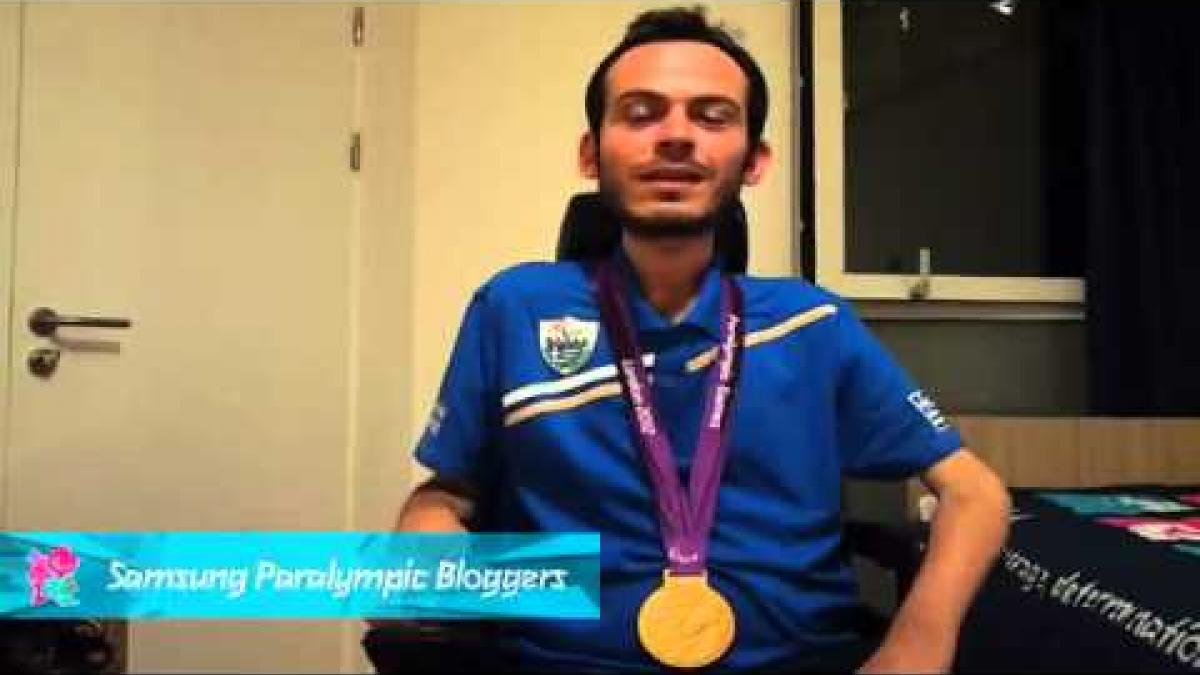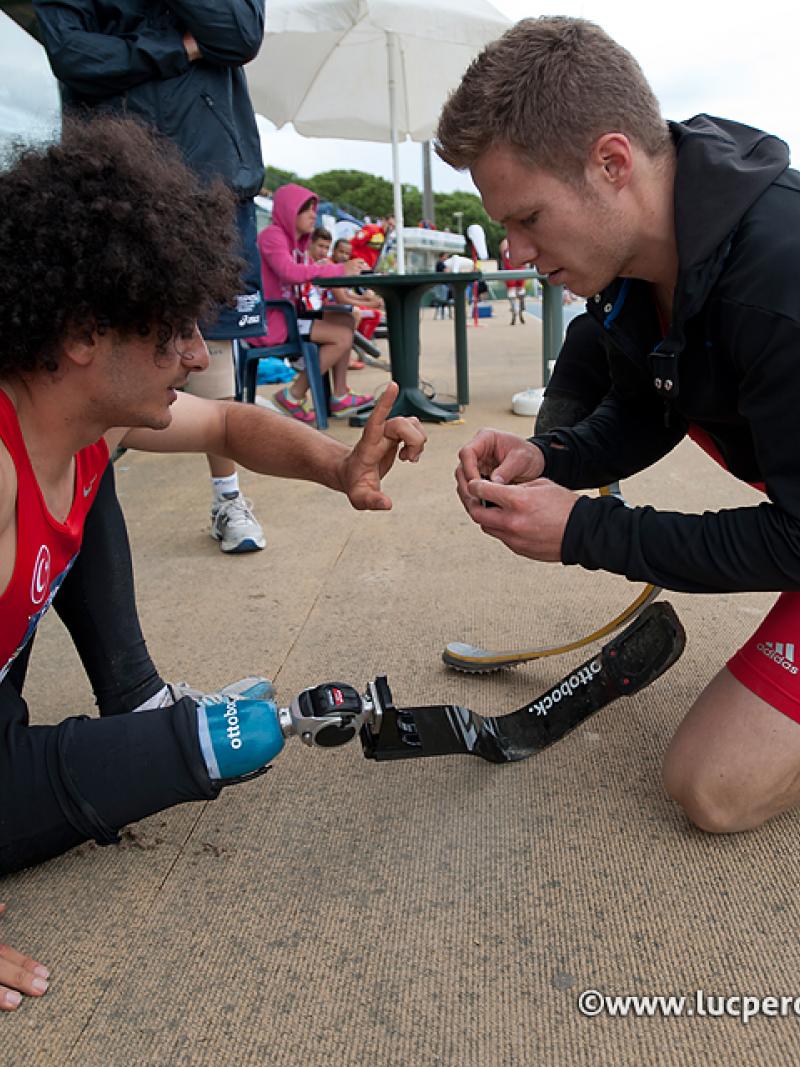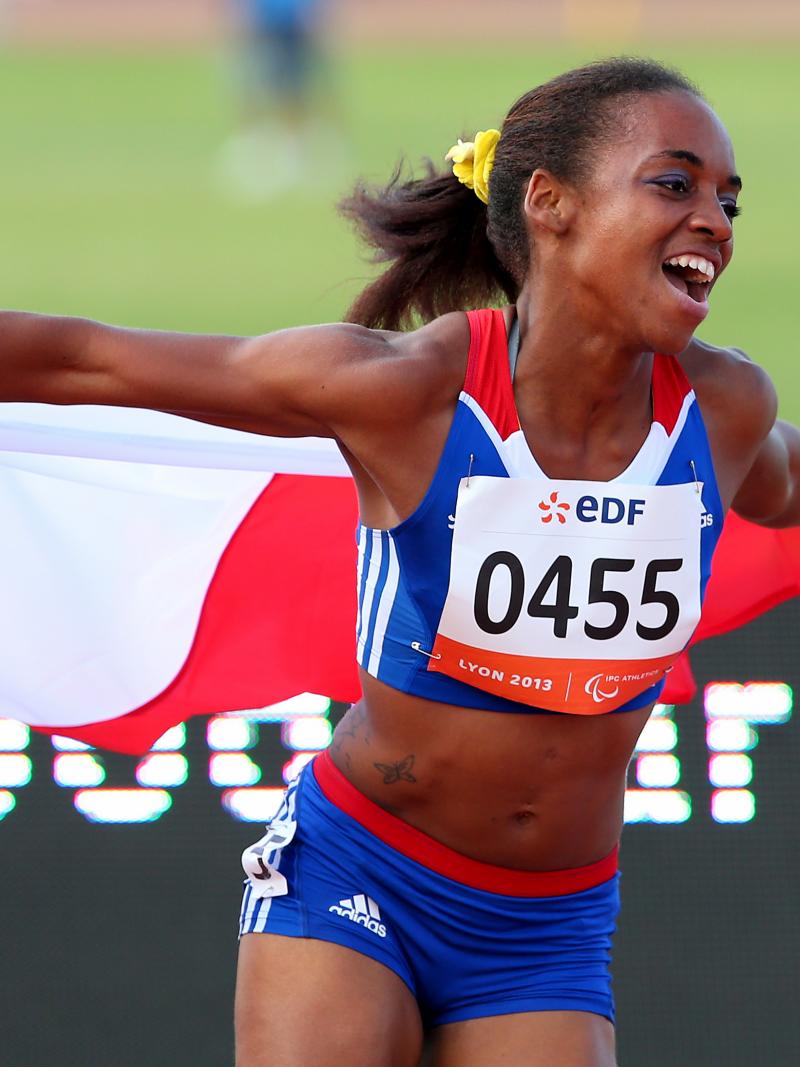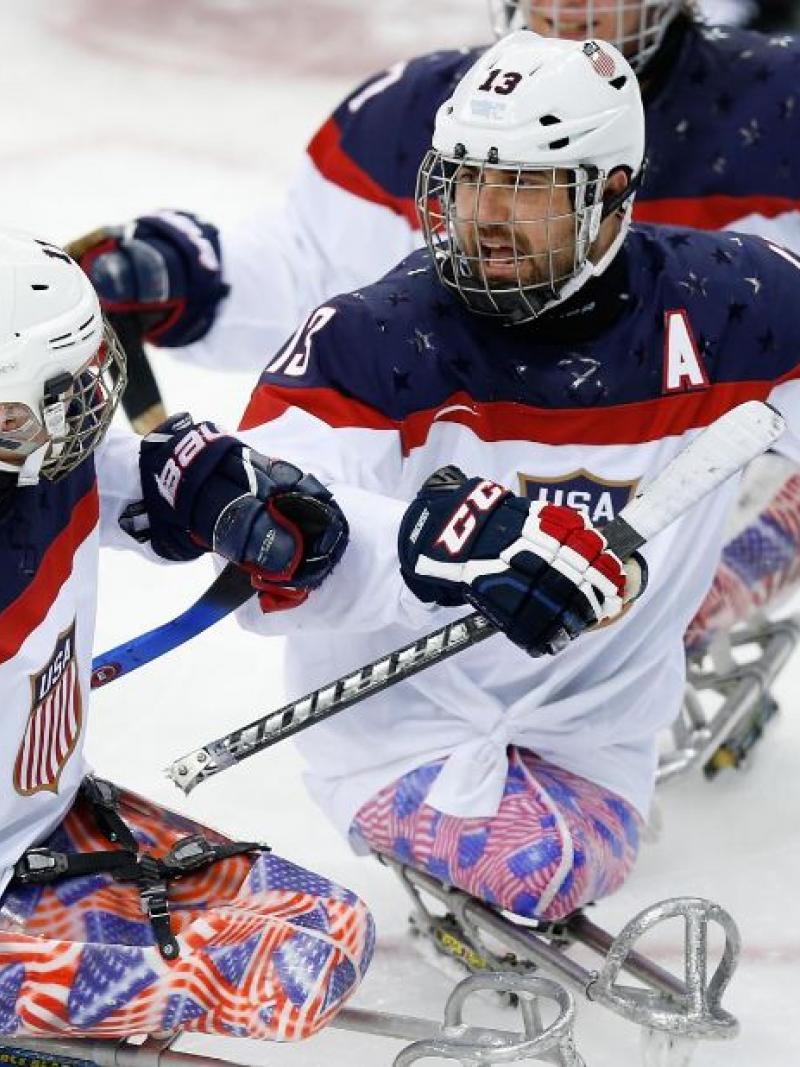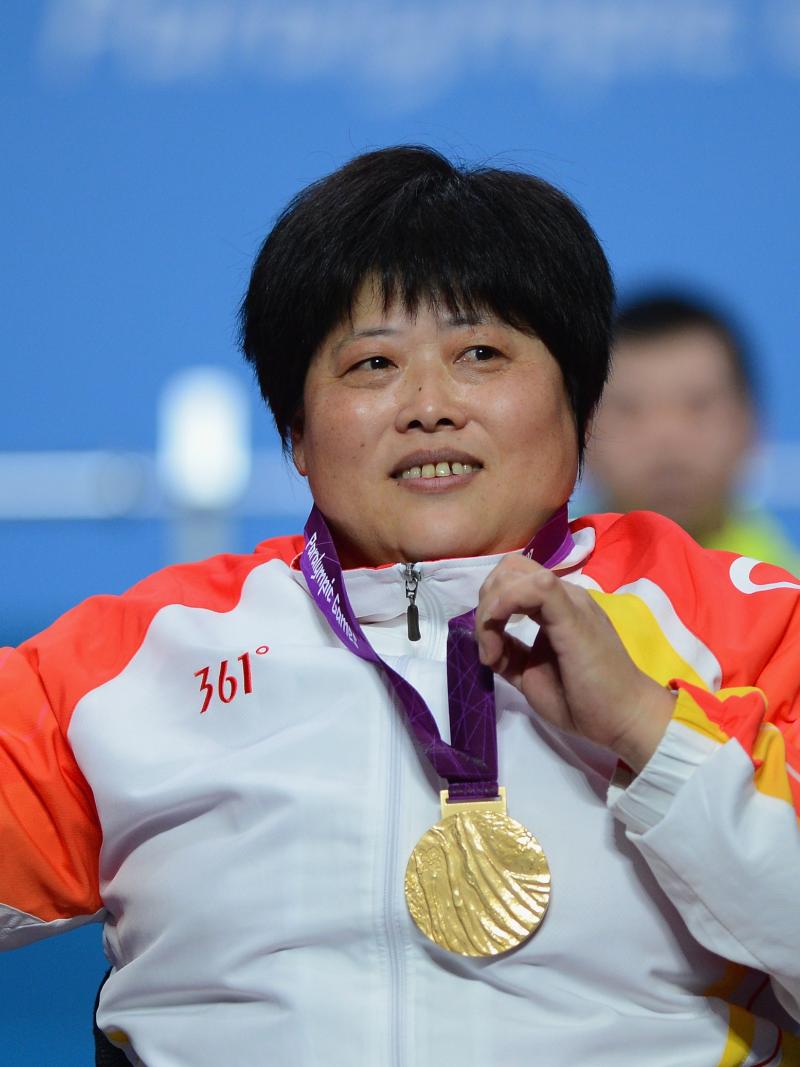Elizabeth Broad: assessing body composition in para-athletes
The author of ‘Sports Nutrition for Paralympic Athletes’ explains different ways for para-athletes to measure their body composition. 07 Oct 2014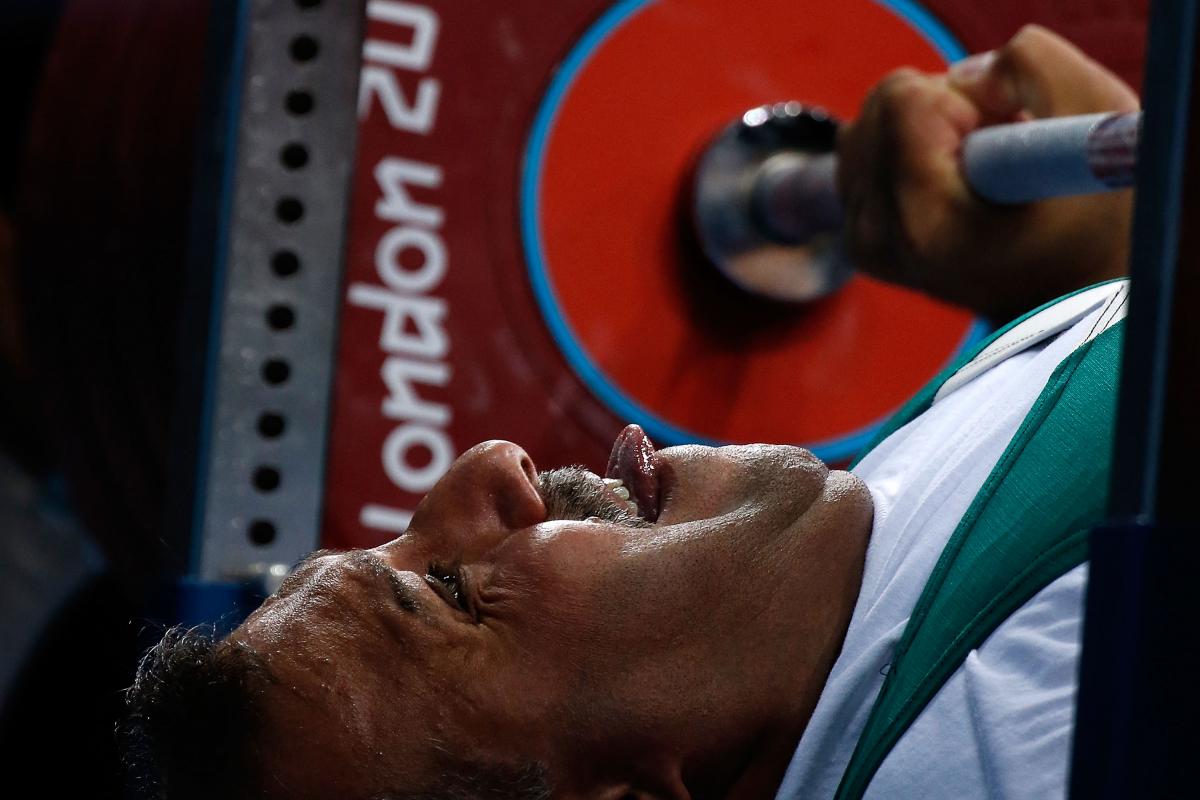
Faris Al-Ajeeli of Iraq sticks his tongue out while attempting a lift during the men's heavyweight competition at the London 2012 Paralympic Games.
Do we know what the optimal body composition is for a para-athlete? The simple answer is no – but we can generally have a good ‘ballpark’ idea based on the type of sport, the physiological requirements for success in that sport, and from data on able-bodied athletes across a number of sports.
Every athlete recognises that their body composition (or physique) changes in response to training. This may happen fairly quickly, such as when you first start training or if you’re still growing, or it may happen more slowly over a number of years of training. In many cases, athletes actively work towards changing their body composition – such as gaining muscle mass to generate more strength, power or endurance; or losing body fat in order to improve power/weight ratio or efficiency.
How do we measure body composition, and can we measure it accurately and repeatedly to get a valid indication of how it’s changing over time? Most people start with a set of scales – but all that tells us is an absolute index of body mass, not what components (fat, water, muscle, bone) are changing over time. There are many other ways that it can be measured, but not all are valid for para-athletes.
The following are some guidelines to use:
• Surface anthropometry (e.g. skinfolds, girths, bone breadths) are valid to estimate changes over time if the same tester takes the measures each time and they are trained in a standardised way. Look for someone with an ISAK accreditation (which is an international standard) – they will have a standardised method of taking measurements and will know how to modify this as required.
• Don’t convert skinfolds to a percentage body fat. Equations have not been validated across para-athletes, and they create an extra layer of potential error. The raw skinfold data (e.g. sum of four or seven skinfolds, in mm) and a waist girth is sufficient to indicate change over time in relative body fatness, and together with girths will provide an indication of changes in relative muscle mass.
• DXA (dual x-ray absorptiometry) can be used to assess bone density as well as body composition, but there are limited locations (often hospitals or universities) and it can be expensive. Scans should be undertaken in a fasted state – if this is not possible then several hours following a meal or fluid ingestion. The body must be positioned exactly the same way each time when tracking body composition changes over time, and the body cannot move during the scan - therefore is not appropriate for individuals with tremor, muscle spasm or who cannot stay still for five minutes. The interpretation of results for athletes with substantial muscle atrophy may also be questionable, particularly in regards to tracking small changes over time.
• Bioelectrical impedance relies on the body being hydrated, and assumes the body is a whole cylinder. It is not valid for unilateral or lower body amputees, athletes with oedema or spinal cord injuries. Best options are ones that have electrodes on all four limbs (either lying down or stand up ones that have hand-held components) rather than stand-on ‘scale’ type devices.
• Bod Pod or under water weighing both measure body density, then use a conversion to estimate percentage body fat. Due to the underlying assumptions involved in this method it is not valid for athletes with substantial muscle atrophy or limb loss. Under water weighing requires people to fully exhale whilst under water, hence would result in undue stress or difficulty for those with a fear of water and young athletes.
Whatever method is used, it needs to be undertaken in a standardised manner each time and should be valid for the individual. This is particularly important if the goal is to track change in body composition over time (over a training season, or a number of years) rather than taking a single measure. In the hands of a trained anthropometrist, surface anthropometry can achieve this goal for the majority of athletes with an impairment, and is highly portable and economical.






